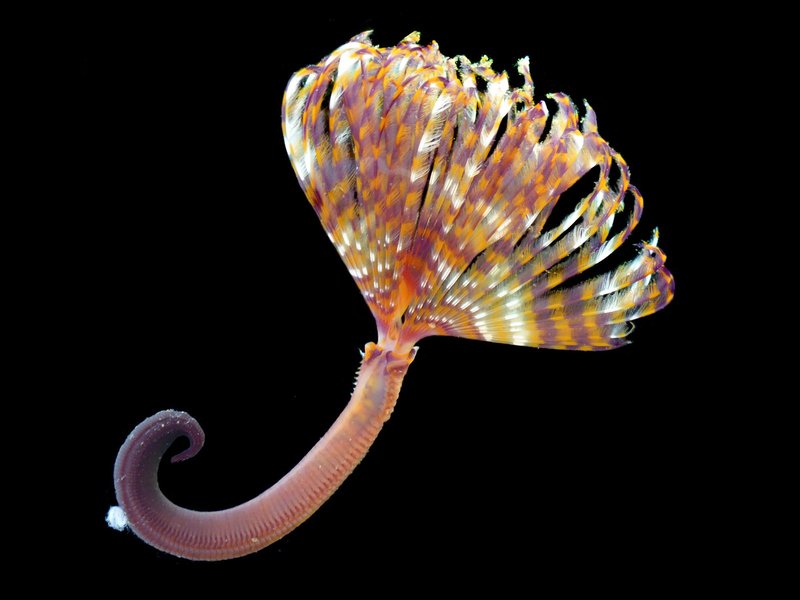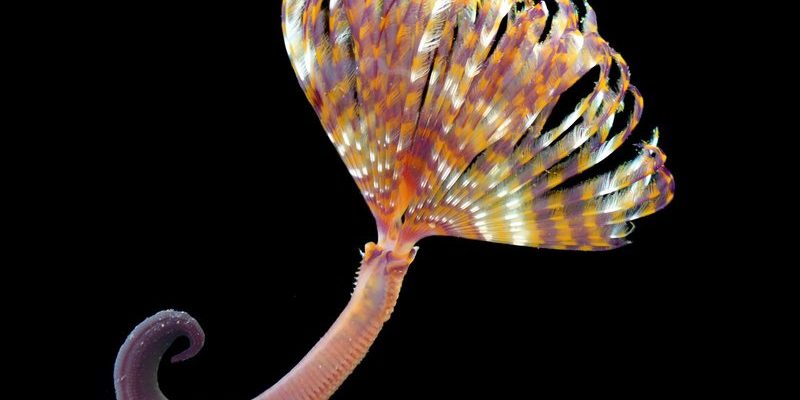
The sabellid fan worm is a type of polychaete, which is basically a fancy word for a segmented worm. They live in tubes that they build from sand, mud, and secreted materials, kind of like using different craft supplies to make a unique art project. Throughout their lives, these worms go through several stages, each with its own behaviors and characteristics. If you’ve ever been curious about how these creatures grow, reproduce, and function in their underwater homes, you’re in for a treat!
Understanding the Sabellid Fan Worm
Before diving into the life cycle of the sabellid fan worm, it’s helpful to understand what they are and their place in the marine environment. These worms are primarily found in coastal waters, often in sandy or muddy substrates. They create elaborate, visually stunning fan-shaped structures that act like filters, collecting tiny food particles from the water.
One of the most captivating aspects of sabellid fan worms is their colorful fans, which are made of bristles called chaetae. You might think of these fans as their “decorations,” showcasing not just their beauty but also their ability to gather food efficiently. They wave in the currents, creating an inviting space for small organisms while providing shelter for themselves.
You could consider the life of a sabellid fan worm much like a journey through an amusement park—full of unique rides, transformations, and challenges. Each phase of their life has its own adventure and surprises, so let’s explore these stages in detail.
Stage 1: Larval Development
The life of a sabellid fan worm begins in the water column as tiny larvae. After mating, the adult female releases eggs that develop into larvae, a stage known as trochophore. These larvae are quite different from the adult worms. They drift with the currents, feeding on plankton and other microscopic organisms. This drifting stage is like taking a scenic tour; they have the chance to explore a vast area of the ocean.
Once the larvae reach a certain size and maturity—usually within a few weeks—they transition into the next stage of their life cycle. They settle down on the ocean floor, searching for a suitable spot to build their future homes. This settling phase is crucial, as it determines their long-term success in finding food and avoiding predators.
You might be wondering what happens next. The larvae undergo a metamorphosis, shedding their swimming structures and transforming into juvenile worms. This change is like switching from a carefree traveler to a resident ready to build a home!
Stage 2: Building Their Tubes
After settling on the seabed, the juvenile sabellid fan worms get to work building their tubes. These tubes provide crucial protection against predators and environmental factors. They use a mix of sand, mud, and mucus to create sturdy homes. Picture kids playing with sand, carefully shaping their creations at the beach; it’s similar, but in this case, the worms are experts at design!
As they build, the worms also begin to develop their famous fan-shaped crowns. These fans are not just for show; they serve a vital purpose. The worms use these fans to capture food particles floating by in the water. The currents carry in a buffet of plankton, and the worms elegantly sweep these morsels into their mouths using their fans.
At this stage, the worms also start to exhibit some interesting behaviors. They can retract their fans quickly, curling up into their tubes if they sense danger. This reaction is like a reflex to a sudden noise; it keeps them safe from hungry predators like fish and crabs.
Stage 3: Maturity and Reproduction
As the sabellid fan worms grow, they eventually reach sexual maturity. Depending on the species and environmental conditions, this can take anywhere from several months to a few years. At this point in their lives, they become like seasoned veterans of the sea, fully equipped to reproduce and continue their lineage.
Reproduction in these worms can be fascinating. During specific times of the year, usually influenced by environmental factors like temperature and food availability, adult worms release both eggs and sperm into the water. This spawning event creates a spectacle in the underwater world, as larvae are released into the current, ensuring the continuation of their life cycle.
After spawning, the adult worms return to their daily routines, feeding and maintaining their tubes. This cycle of life illustrates the delicate balance in marine ecosystems, where each species plays a role. It’s like a well-choreographed dance, with each dancer knowing their part and timing perfectly.
Behavioral Patterns: Feeding and Defense
Throughout their lives, sabellid fan worms display intriguing behaviors, particularly in feeding and defense. When it comes to finding food, these worms are excellent at taking advantage of their surroundings. Their fan-like crowns help them filter out tiny particles, which they then transfer to their mouths using cilia—tiny hair-like structures.
This feeding behavior is a bit like fishing with a net. The worms strategically position their fans to maximize their catch. When food is abundant, they can thrive, but they also have to be aware of their surroundings to avoid becoming prey themselves.
For defense, the ability to retract into their tubes is key. If a predator approaches, the worms quickly pull their fans in and hide. Their tubes offer some degree of protection, making it harder for predators to reach them. It’s their go-to safety measure, enhancing their chances of survival.
Life Span and Challenges
The life span of a sabellid fan worm can vary, typically ranging from a few years to over a decade depending on environmental conditions and threats. However, like many marine organisms, they face challenges that can shorten their lives.
Pollution, habitat loss, and climate change are significant threats to their survival. Changes in water temperature can affect spawning and the availability of food, while pollution can contaminate their environment. Just as we face challenges in our lives, so do these creatures, and their resilience is a testament to their adaptability.
Despite these challenges, sabellid fan worms continue to thrive in many ocean habitats, highlighting their importance in maintaining healthy ecosystems. Their presence indicates a balanced environment, acting as natural filters that contribute to water quality.
The Importance of Sabellid Fan Worms in Ecosystems
You might be thinking, why should we care about these seemingly simple creatures? Sabellid fan worms play a vital role in marine ecosystems. They help improve water quality by filtering out excess nutrients and particulate matter. This action is akin to a natural cleaning system, which benefits other marine life.
Their tubes also provide habitats for various other species, including small fish, crustaceans, and even other invertebrates. By offering shelter, they contribute to the biodiversity of the ocean floor. If you think of marine life as a large community, sabellid fan worms are like the builders, creating safe spaces for others to thrive.
Furthermore, they serve as indicators of ecosystem health. Monitoring their populations can give scientists insights into the overall condition of the marine environment. When they flourish, it often means the habitat is in good shape, which is crucial for many other species, including commercially important fish.
The life cycle of the sabellid fan worm is a remarkable journey, filled with transformations and significant contributions to marine ecosystems. From humble beginnings as tiny larvae drifting in the open water to becoming robust adults filtering food and creating habitats, these worms exemplify the beauty of life under the sea.
Their unique behaviors, like filtering food and retreating for protection, highlight their adaptability and resilience in changing environments. Understanding the cycles and challenges these creatures face helps us appreciate the intricate balance of marine ecosystems. Ultimately, the sabellid fan worm is a reminder of the wonders of nature, urging us to protect and preserve the habitats that support such diverse life forms. Let’s celebrate their journey and consider our role in supporting the health of our oceans.

